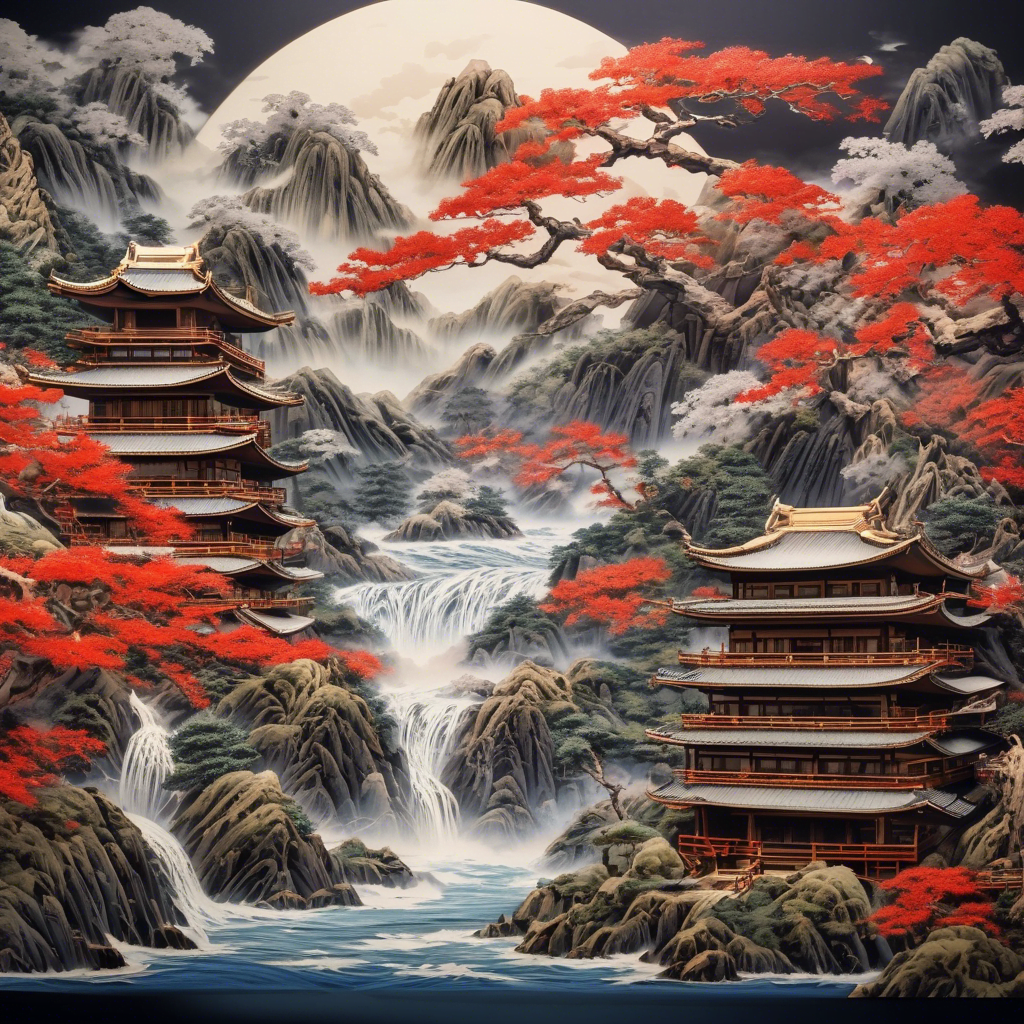The Nihon Shoki

The Nihon Shoki, also known as the Nihongi, is one of the oldest history books in Japan. It was completed in 720 AD and covers the mythical and historical events of Japan from its creation to the 7th century. The book consists of 30 volumes and provides valuable information about early Japanese culture, religion, and political systems. It is based on earlier records and folklore, making it a blend of myth and history. The Nihon Shoki also includes stories of gods and emperors, as well as important events like the introduction of Buddhism to Japan. Despite its mythical elements, the book is considered an important historical source and has greatly influenced Japanese literature and culture.
Here is a timeline of important events related to the Nihon Shoki:
– 720 AD: The Nihon Shoki is completed by imperial order.
– 5th century AD: The mythical origins of Japan, including the creation of the Japanese islands and the lineage of the imperial family, are recorded in the Nihon Shoki.
– 6th century AD: The introduction of Buddhism to Japan and the establishment of the first Buddhist temples are documented in the Nihon Shoki.
– 7th century AD: The Nihon Shoki covers historical events such as the reigns of various emperors, wars, and political developments in Japan.
– Post-7th century AD: The Nihon Shoki continues to be a significant historical and cultural source in Japan, influencing literature, art, and interpretations of early Japanese history.
Overall, the Nihon Shoki has played a crucial role in shaping the understanding of Japan’s ancient past and continues to be studied and referenced by scholars and enthusiasts interested in early Japanese history and culture.
The Nihon Shoki was compiled and written by a team of scholars and court officials under the supervision of Prince Toneri and Prince Ōtomo, who were members of the imperial family in Japan. The actual authors of the Nihon Shoki are not specifically named in the text, but it is believed that the work was a collaborative effort involving multiple individuals. The project was initiated by Emperor Tenmu and Empress Jitō with the aim of creating a comprehensive historical record of Japan that would legitimize the authority of the imperial family.
While the specific writers of the Nihon Shoki remain anonymous, the book is considered a significant achievement in early Japanese historiography and literature. It represents a blend of historical facts, mythological narratives, and religious beliefs that provide insights into the early cultural and political developments of Japan.
The Nihon Shoki is a historical text that includes a wide range of characters, including gods, emperors, empresses, legendary figures, and historical personalities. Here are some of the key characters mentioned in the Nihon Shoki:
1. Amaterasu: The sun goddess and one of the central deities in Shinto mythology. She is considered the ancestor of the imperial family in Japan.
2. Susanoo: The storm god and brother of Amaterasu. He is known for his turbulent nature and various adventures.
3. Jimmu: The legendary first emperor of Japan, said to have ascended to the throne in the 7th century BC.
4. Empress Jingū: A legendary empress who is said to have led a successful military campaign to Korea.
5. Emperor Tenmu: A historical figure who reigned in the 7th century AD and played a role in the compilation of the Nihon Shoki.
6. Empress Jitō: Another historical figure who ruled as empress regnant in the 7th century AD and was involved in the completion of the Nihon Shoki.
7. Prince Toneri and Prince Ōtomo: Members of the imperial family who supervised the compilation of the Nihon Shoki.
These are just a few of the many characters mentioned in the Nihon Shoki. The text includes a wide array of figures from myth, legend, and history, each contributing to the rich tapestry of Japanese cultural heritage as presented in the book.
The Nihon Shoki is a compilation of stories that blend mythological narratives with historical accounts, providing a detailed record of Japan’s early history and culture. Here are some key stories and themes found in the Nihon Shoki:
1. Creation Myth: The Nihon Shoki begins with the story of the creation of the Japanese islands by the divine pair Izanagi and Izanami, as well as the birth of numerous gods and goddesses.
2. Amaterasu’s Descent: One of the central myths in the Nihon Shoki is the story of the sun goddess Amaterasu, who hides in a cave after a conflict with her brother Susanoo. Her eventual emergence from the cave brings light back to the world.
3. Jimmu’s Journey: The Nihon Shoki recounts the legendary journey of Jimmu, the first emperor of Japan, as he establishes his rule and founds the imperial dynasty.
4. Empress Jingū’s Expedition: The Nihon Shoki includes the tale of Empress Jingū’s military expedition to Korea, where she leads a successful campaign without shedding blood.
5. Introduction of Buddhism: The Nihon Shoki documents the introduction of Buddhism to Japan and the early interactions between Buddhist teachings and indigenous Shinto beliefs.
6. Reigns of Emperors: The book provides detailed accounts of the reigns of various emperors, their accomplishments, and the political events of their time.
7. Genealogy of the Imperial Family: The Nihon Shoki traces the lineage of the imperial family back to the gods, establishing the divine mandate for imperial rule in Japan.
These stories and themes, among others, are woven together in the Nihon Shoki to create a comprehensive narrative of Japan’s mythical origins, legendary figures, and historical developments up to the 7th century. The book serves as a vital source for understanding early Japanese culture, religion, and society.
